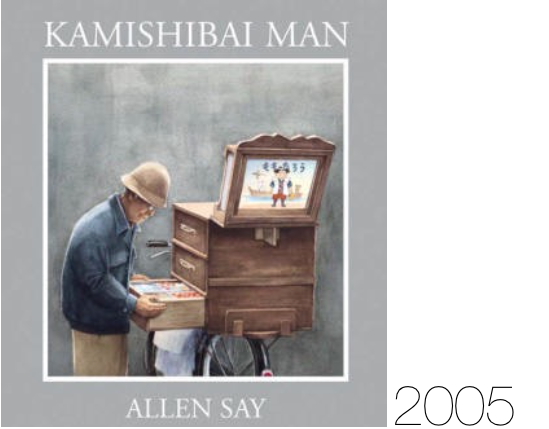

The illustrations are beautifully done in gouache. In addition, the literary element of style is also unique because the book utilizes dialogue throughout the story. The kambishibai himself is telling this story. The kambishibai reflects on the past, like a flashback, in a story-like form in the future. The literary element, plot, is unique in this book because it combines both the future and the past. From then on, he returns to the same area to tell his stories, just like old times. They realize that they grew up with his stories! The crowd cheers and calls out their favorite stories for the kambishibai to tell once again.

A crowd gathers around the kambishibai man as he tells this story of how children stopped listening to his stories, and the crowd recognizes him and his voice. As he rides the same route, he notices tall building, busy streets full of trucks, and a multitude of shops and restaurants where a park once stood. One day, he, now an old man, decides to return to the city to tell stories again. That was the day the kambishibai man quit telling stories. One boy, however, continued to come to the kambishibai man for a while longer, until he no longer returned. Children became engrossed in the movie pictures on the television. Children flocked to his bicycle to listen to his stories until children lost interest because of the invention of the television. He used to ride his bicycle where the children played, dramatically told his and the children's favorite stories, and passed out delicious candy.

In this story, a man who used to tell kambishibai stories reminisces on his storytelling days. Kambishibai is a Japanese word that means "paper drama" that originated in 12th century Japanese Buddhist temples.


 0 kommentar(er)
0 kommentar(er)
